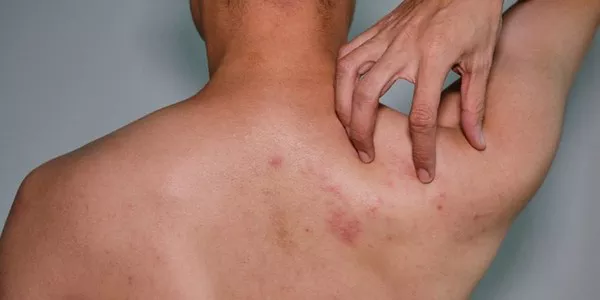Shingles, also known as herpes zoster, is a viral infection caused by the varicella-zoster virus (VZV), the same virus responsible for chickenpox. While shingles typically manifests as a painful rash accompanied by fluid-filled blisters, one of the lingering questions surrounding this condition is whether it is contagious before the rash appears. Understanding the dynamics of shingles transmission prior to the onset of visible symptoms is crucial for effective prevention and management strategies. In this article, we delve into the scientific evidence and clinical insights to shed light on the contagious nature of shingles in its pre-rash phase.
The Varicella-Zoster Virus: A Closer Look at Transmission Dynamics
To comprehend the contagiousness of shingles before the rash emerges, it’s imperative to grasp the lifecycle and transmission dynamics of the varicella-zoster virus. VZV primarily spreads through direct contact with fluid from the blisters of individuals infected with either chickenpox or shingles. The virus can also be transmitted through respiratory droplets expelled during coughing or sneezing, particularly in the case of chickenpox.
Upon initial infection, typically during childhood, the varicella-zoster virus remains dormant in the sensory ganglia of the nervous system. However, the virus can reactivate years later, leading to the development of shingles. Reactivation is often associated with factors such as aging, immunosuppression, and stress, although the precise triggers remain the subject of ongoing research.
Pre-Rash Shedding of Varicella-Zoster Virus: Myth or Reality?
The notion of shingles being contagious before the appearance of the characteristic rash has sparked considerable debate among researchers and healthcare professionals. While it’s well-established that individuals with shingles can transmit the virus through direct contact with the fluid-filled blisters, the potential for viral shedding before the onset of visible symptoms is less clear-cut.
Several studies have investigated the phenomenon of pre-rash shedding of VZV to ascertain its clinical significance. One notable study published in the Journal of Infectious Diseases examined viral shedding in patients with herpes zoster before and after the onset of the rash. The findings revealed detectable levels of VZV DNA in saliva and mucosal swabs of some patients up to 48 hours before the appearance of the rash, albeit at lower concentrations compared to the post-rash phase.
Clinical Implications and Public Health Considerations
The possibility of shingles being contagious prior to the emergence of the rash carries significant implications for both clinical practice and public health interventions. Clinically, healthcare providers must remain vigilant for early symptoms of shingles, such as prodromal pain or tingling sensations, which may precede the onset of the rash. Prompt recognition of these prodromal symptoms enables timely initiation of antiviral therapy, which can help mitigate disease severity and reduce the risk of complications.
Moreover, individuals who are immunocompromised or have not been vaccinated against chickenpox are particularly vulnerable to varicella-zoster virus infection. For this reason, vaccination against chickenpox (varicella vaccine) and shingles (herpes zoster vaccine) is recommended as a preventive measure, especially among older adults and immunocompromised individuals. Vaccination not only reduces the risk of developing shingles but also decreases the likelihood of transmitting the virus to susceptible individuals.
Mitigating Transmission Risks and Promoting Awareness
In addition to vaccination, implementing preventive measures to reduce the transmission of shingles is essential for protecting vulnerable populations and curbing disease spread. Healthcare professionals play a pivotal role in educating patients about the importance of practicing good hygiene, such as frequent handwashing and avoiding close contact with individuals who have active shingles lesions.
Furthermore, raising awareness about the potential for shingles contagion before the rash appears is paramount for fostering early recognition and prompt medical intervention. Public health campaigns aimed at dispelling misconceptions and promoting proactive healthcare-seeking behavior can empower individuals to seek timely medical evaluation upon experiencing prodromal symptoms suggestive of shingles.
Conclusion
In conclusion, the question of whether shingles is contagious before the rash appears remains a topic of scientific inquiry and clinical interest. While evidence suggests that viral shedding may occur in the pre-rash phase, the extent of contagiousness during this period is still being elucidated. Nevertheless, healthcare providers should remain vigilant for prodromal symptoms indicative of impending shingles and counsel patients on preventive measures, including vaccination and good hygiene practices. By fostering awareness and implementing targeted interventions, we can mitigate the transmission risks associated with shingles and enhance public health outcomes.
Through a synthesis of scientific evidence and clinical insights, this article has endeavored to provide a comprehensive understanding of the contagious nature of shingles before the onset of the characteristic rash. By unraveling the complexities surrounding pre-rash contagion, we can inform evidence-based strategies for prevention, early detection, and management of this debilitating viral infection.

























